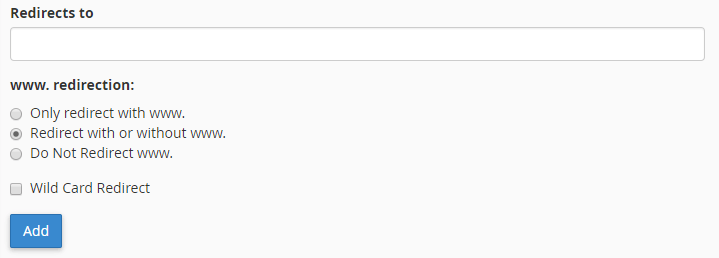- Aug 15, 2017
 0
0- by A2 Support Team
Changing your domain name is something that rarely happens. In most cases, you’ll stick with your selection all the way. After all, it’s likely central to your branding. However, that isn’t always the case, and there are some compelling reasons why making a change can be a good thing.
For example, you may find a domain name that suits your website much better, or, you may decide to change suffixes for personal reasons. Regardless, as long as you follow a few simple steps, changing your domain name shouldn’t impact your website or customers noticeably.
In this article, we’re going to talk about some of the reasons why you’d want to change your domain name. Then we’ll walk you through the process in four simple steps. Let’s get started!
When You Should Change Your Domain Name

Your domain name is essentially akin to your home address. Each website is accessible through a unique IP address. When you register a domain, you’re actually creating a record on a Domain Name System (DNS) that tells people, “Hey, if you visit this domain, you’re connecting to this particular IP address.”
It sounds complex, but it’s a very straightforward system. People don’t often change domain names for fear that their users won’t be able to find their sites again. However, there are some instances where doing so can be beneficial:
- Rebranding purposes. In some cases, you may want to change your site’s entire image and name, and you’ll need a new domain to complete the package.
- Better communication for your site’s focus. Depending on your options, you may have chosen a domain name that you’re no longer satisfied with, or picked an unsuitable Top-Level Domain (TLD) – i.e. the .com, .net, or other identifier following the domain name.
The good news is the process of changing to a new domain name is pretty uncomplicated. Not only will you keep your content in the process, but you also won’t confuse your regular visitors. You’ll simply need to follow a simple step-by-step procedure to ensure you don’t run into any problems.
How to Change Your Domain Name the Right Way (In 4 Steps)
The process of changing your domain name is very simple, although the ‘right way’ involves more than simply purchasing your new domain. You’ll also want to make the process as seamless as possible for your visitors, so let’s take a look at how to do it.
Step #1: Choose a New Domain Name and Assign it to Your Website

Choosing a new domain name is a highly personal decision, but there are a few aspects to keep in mind to ensure you make a smart one. We’ve previously devoted an entire article to walk you through that process, so check it out before settling on a new domain.
When you’re ready, you can register your new domain through our platform. If you’re an A2 Hosting customer, you can simply assign that name to your existing website. However, for other hosts you’ll need to dig into their knowledge bases to find the correct process.
Step #2: Rebrand Your Website’s Design

Depending on your choice of domain, you’ll likely need to update aspects of your site’s design to reflect it. For example, your logo will likely need an update, but the same goes for any other element that alludes to your former domain name. For example:
- Your About page if your site has one.
- Your website’s footer, which often includes copyright information.
- The ‘tagline’ of your site, which is the text that appears on a browser’s tab when you open it.
- Any miscellaneous references within your content.
Fortunately, making these changes is relatively straightforward, although you’ll need to make sure you’ve removed all references to your previous domain on your site before pressing ahead.
You’ll also need to let visitors know about these changes so they aren’t left scratching their heads. We’ll talk about that shortly, but before that, let’s talk about redirects.
Step #3: Redirect Traffic to Your New Domain
Arguably the most important step when changing your domain name is to redirect users from the old one to the new one. That way, you won’t lose out on any visitors who bookmarked your past address, or happened to visit regularly.
Most web hosts (including A2 Hosting) enable you to do this from your cPanel. Just look for the icon that says Redirects under the Domains section of your cPanel and click on it:
Once you’re in the Redirects page, pick the option that reads Permanent (301) and the domain you want to redirect:
Next, type the URL of the new domain you registered, and enable the setting that says Redirect with or without www:
Once you click the Add button, you’re ready to go! Now, every time someone visits your old domain, they’ll be sent to your new one. For the time being, we recommend keeping both of them active until traffic to your former domain dies down.
Step #4: Update Your Users About Your Rebranding
At this stage, you should have a new domain name up and running. All that’s left now is to update your users about the changes to your website, such as its new URL, and the rebranding process where necessary.
This step is important because without it, you’ll have a lot of confused regulars. In our opinion, these are the three best ways to break the news to your user base:
- Add an explanatory post to your website as soon as you rebrand it.
- Use your site’s social media accounts to update your followers, and link them to that aforementioned post.
- Send out an email campaign explaining the changes to your site.
Keep in mind that you can send out multiple social media updates and emails for methods two and three. That way, you’ll maximize your chances of engaging with as many followers and subscribers and possible.
Conclusion
Changing your domain name isn’t a decision you should take lightly. After all, it’s one of the core elements and primary identifiers for every website. However, if you’re certain about it, there’s no reason why you can’t pull it off without harming your site’s traffic or identity.
Let’s recap the four steps to changing your domain name safely:
- Choose a new domain name and assign it to your website.
- Rebrand your website’s design.
- Redirect traffic to your new domain.
- Update your users about your rebranding.
Related Resources
- How to Check Domain Availability (& What to Do If It’s Taken)
- Creative Domain Hacks for Registering Fun Domain Names
- How to Switch Your Domain Name Without Damaging Your SIte’s SEO
- How to Connect Your WordPress.com Custom Domain Email to A2 Hosting
Image credit: Pixabay.













